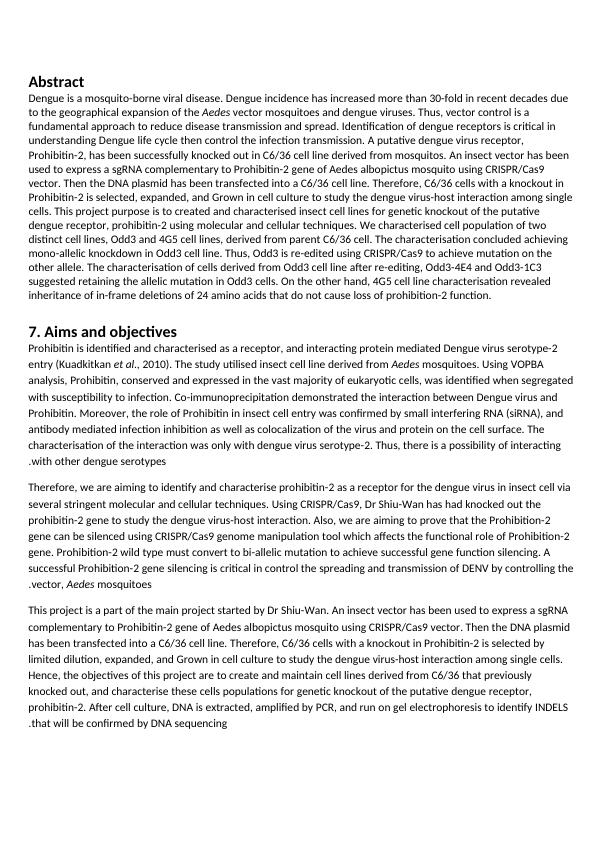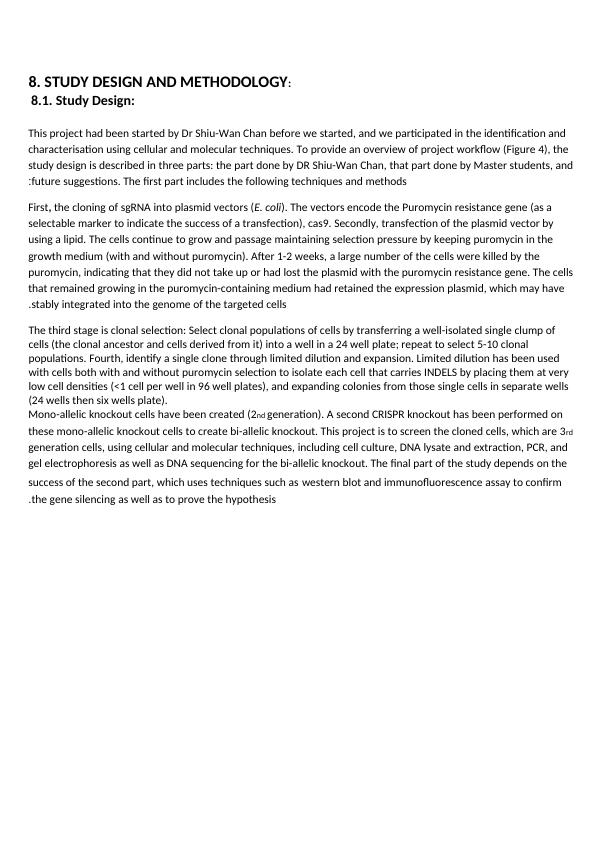Ask a question from expert
Identification and Characterisation of Prohibitin-2 as a Receptor for Dengue Virus in Insect Cell
5 Pages2790 Words379 Views
Added on 2019-10-18
About This Document
This article discusses the identification and characterisation of Prohibitin-2 as a receptor for Dengue virus in insect cell using molecular and cellular techniques. It explains how CRISPR/Cas9 was used to knock out the Prohibitin-2 gene and study the dengue virus-host interaction. The article also outlines the study design and methodology, including cell culture, DNA extraction, PCR, gel electrophoresis, and DNA sequencing.
Identification and Characterisation of Prohibitin-2 as a Receptor for Dengue Virus in Insect Cell
Added on 2019-10-18
BookmarkShareRelated Documents
End of preview
Want to access all the pages? Upload your documents or become a member.
Article on Dengue: Doc
|11
|2881
|260
Prohibitin-2 | Receptor of Dengue Virus
|2
|782
|495
Tracking of Indels by Decomposition (TIDE) Method
|2
|895
|630
Virology Homework Help
|4
|857
|336
The Parental Cell line C6/36
|3
|941
|485
Dengue Fever: Symptoms, Transmission, and Global Burden
|14
|9196
|318

